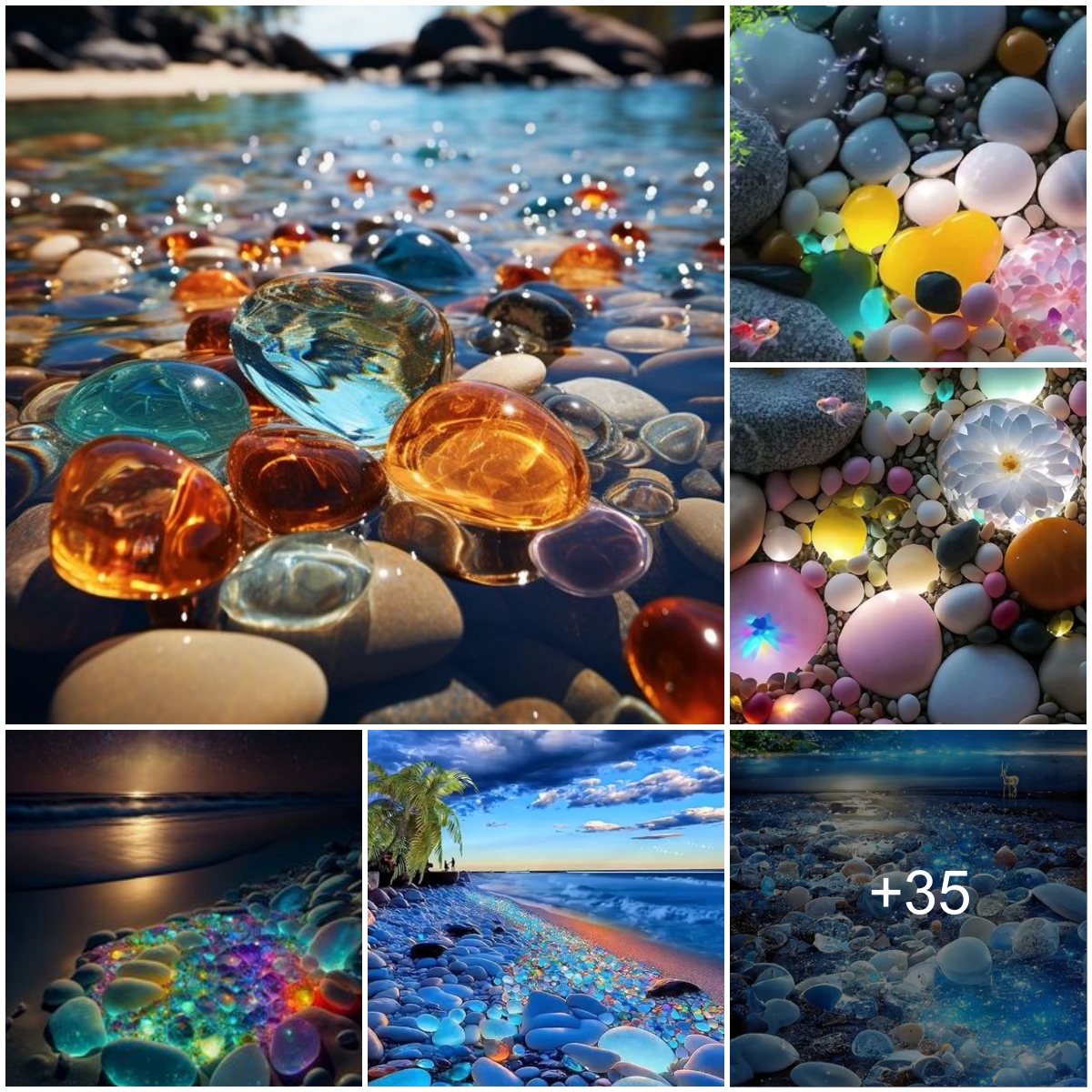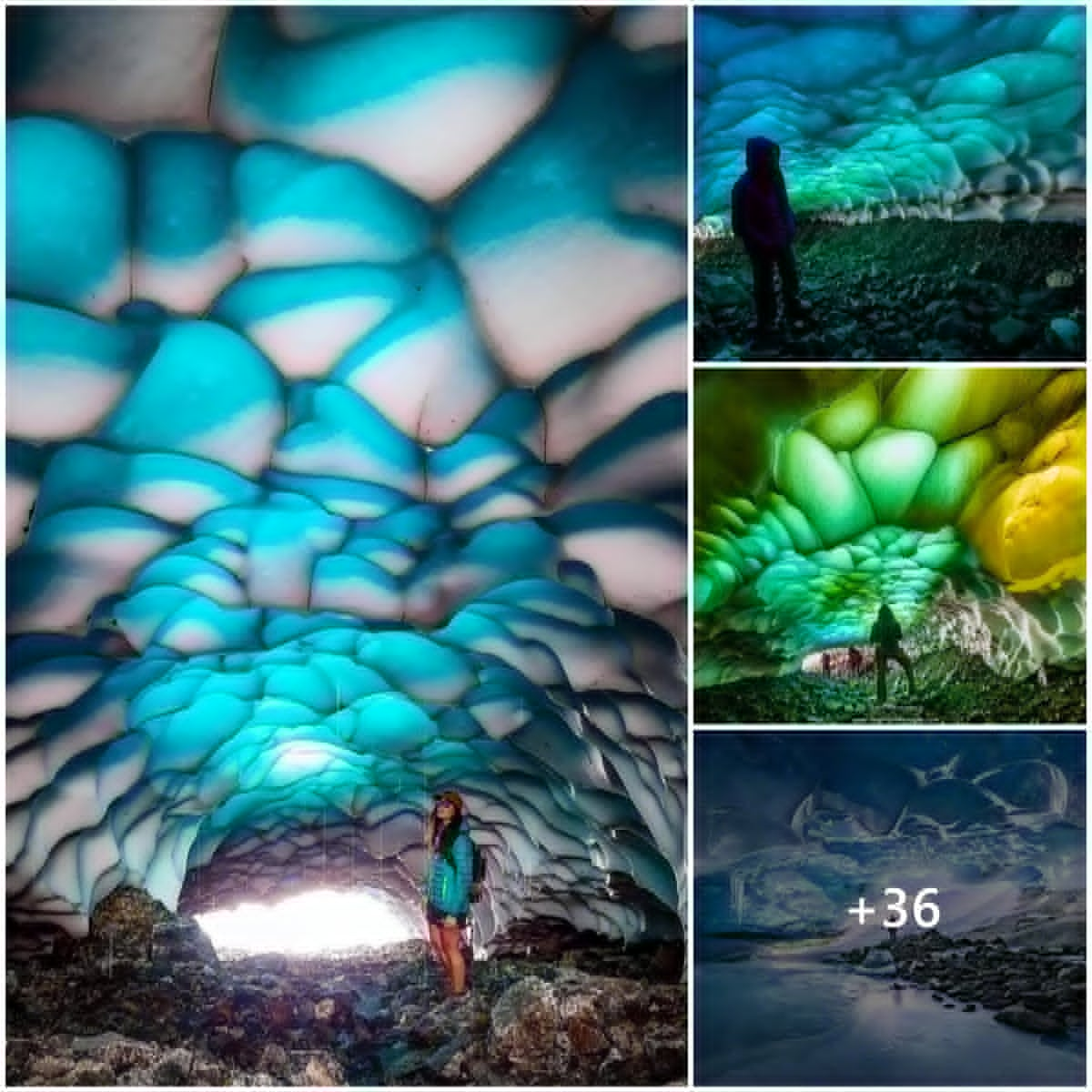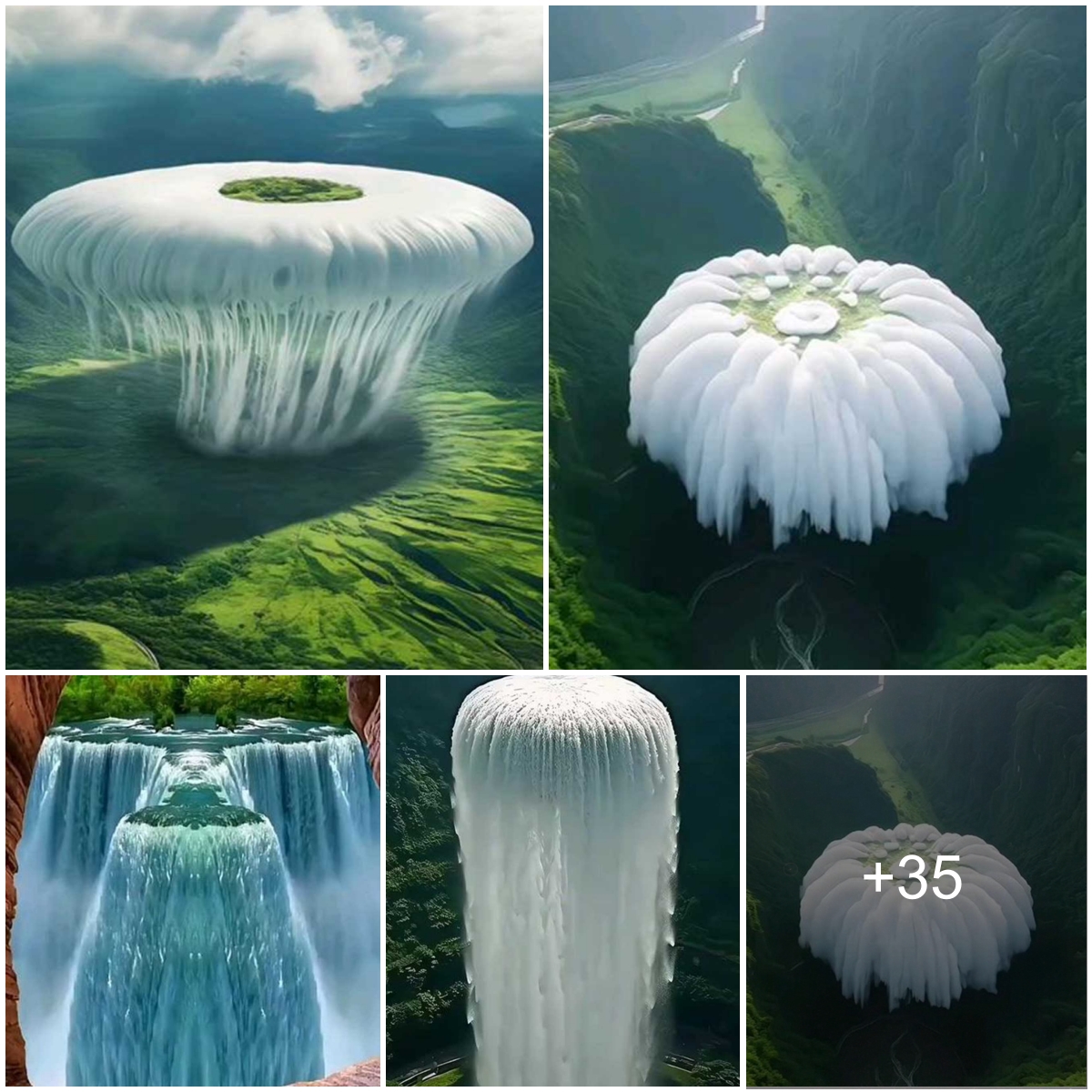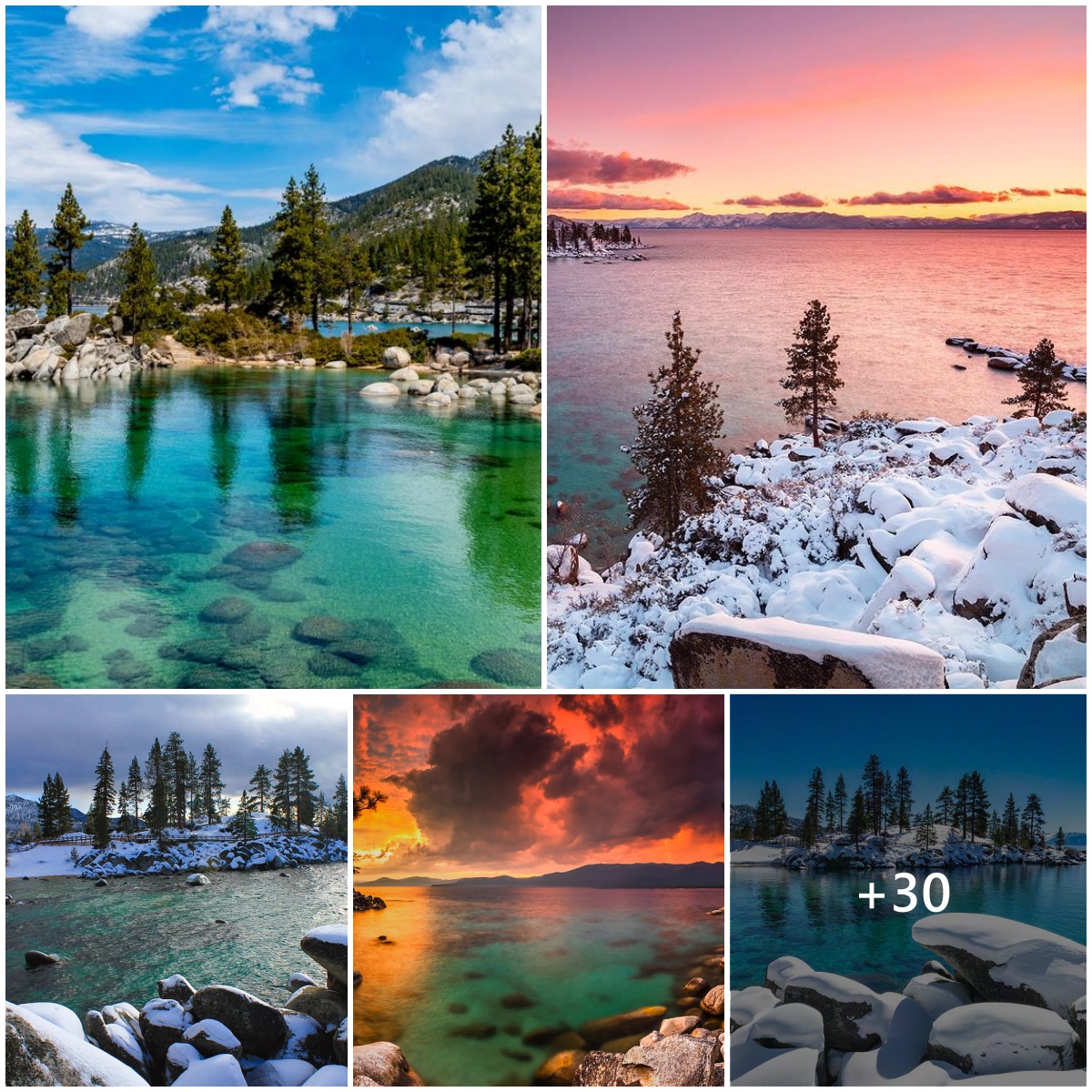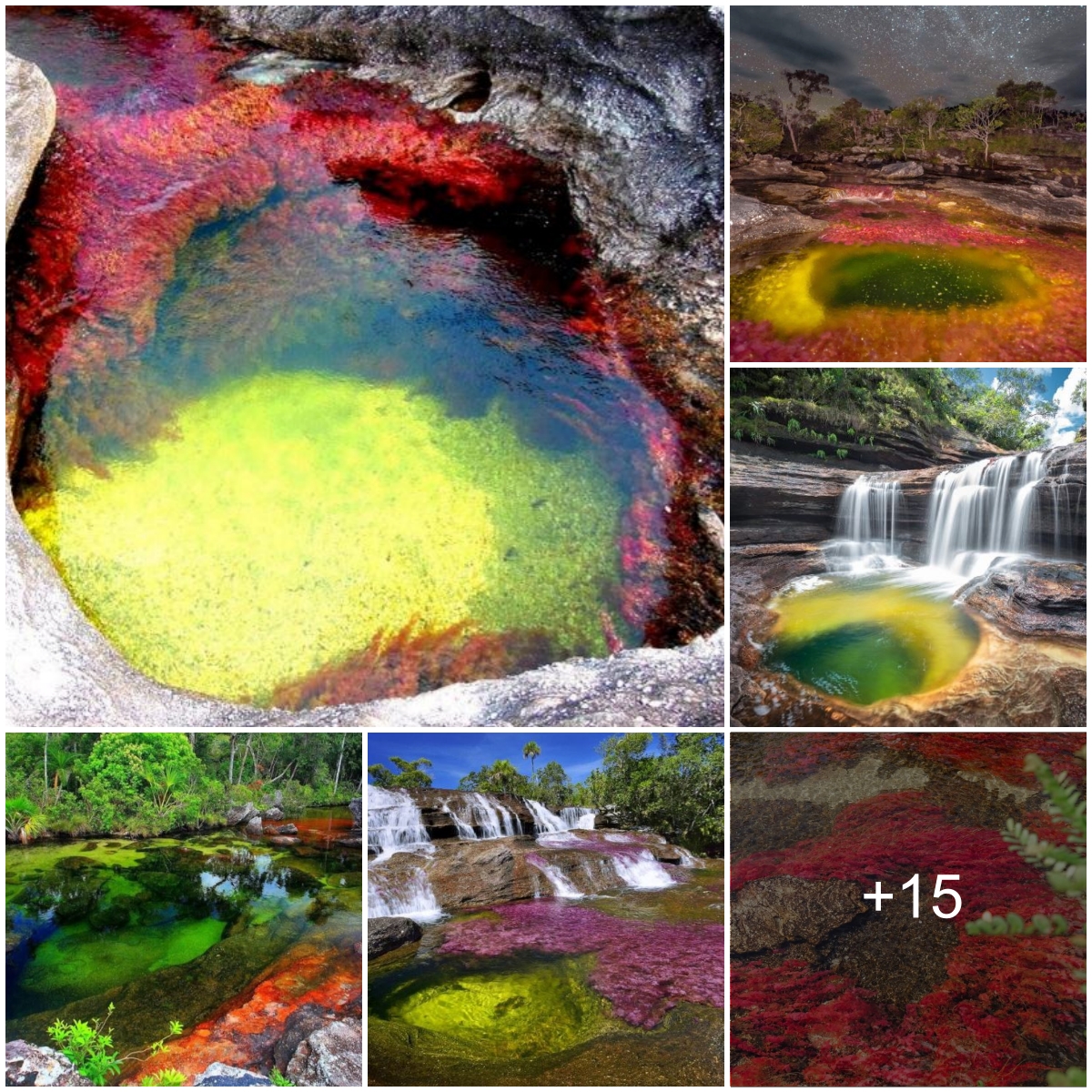When you think of Japan, you probably almost immediately think of the bustling city of Tokyo with its flashing neon-lights and large crowds of people. Or perhaps the more historical setting of Kyoto and the geisha culture pop into to your mind. But besides these iconic places there is so much more to discover.
From the north of Japan to the very south, the country measures about 3.000 km and approximately 73% of Japan is mountainous. Because most of the mountain area is heavily forested, Japan is also largely covered in forest: about 69%. You can probably imagine this provides some spectacular scenery. Combine that with the rich history and culture in Japan and you will be sure to expected some amazing things!
Let’s discover some ‘less-known-to-the-tourist-places’, the to-go-to spots for the local travellers.
- 1. Mount Aso – Japan’s largest volcano
- 2. Shirogane Blue Pond – a man-made picture perfect lake
- 3. Kumano Nachi Taisha – shrine complex with the tallest waterfall of Japan
- 4. Historic Villages of Shirakawa-gō and Gokayama
- 5. The sacred mountain Mount Haguro
- 6. The Flower Tunnel of Wisteria
- Articles you may also like
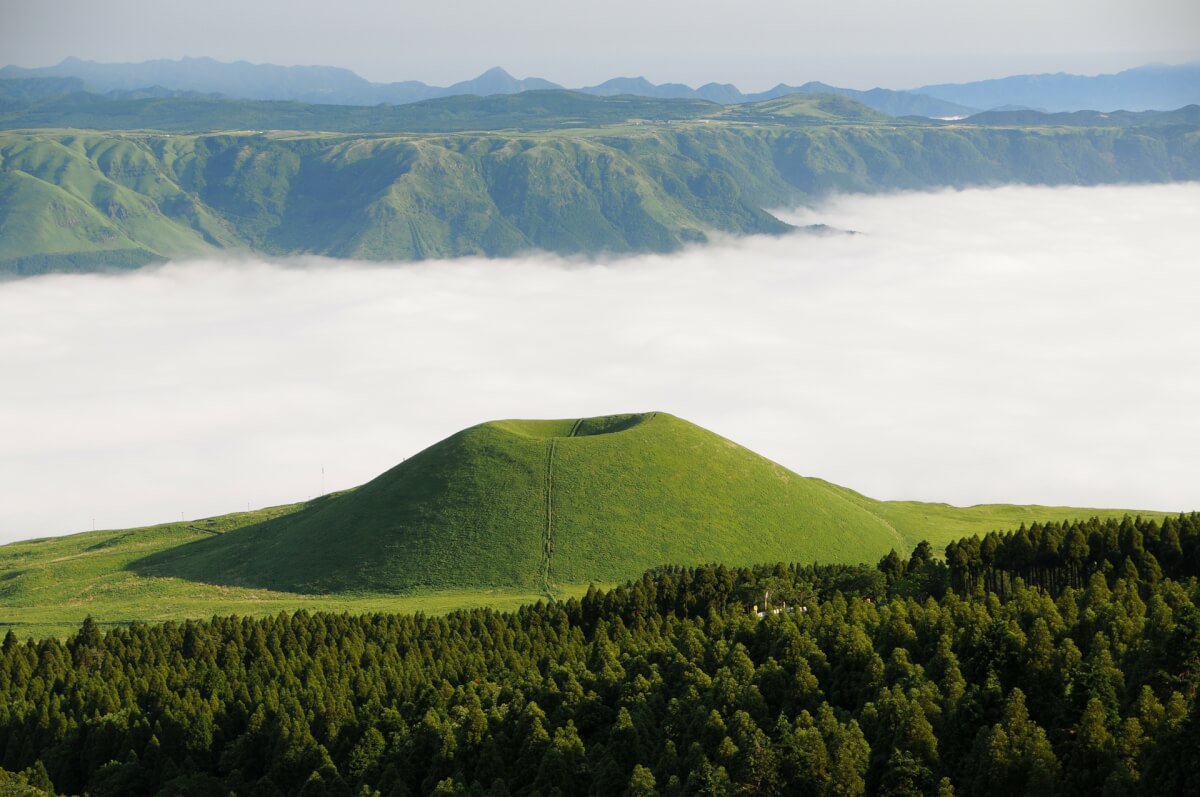
Japan’s largest volcano – also one of the world’s largest – named Mt. Aso or Asosan is an active volcano, located in Kumamoto prefecture on Kyushu region. Described as ‘one of the most beautiful Quaternary caldera volcanoes in the world’, the region of Aso became UNESCO Global Geopark in 2014. The volcano is located at 1592 meters and consists of five peaks, of which Mt. Nakadake, located right in the center of the caldera, is the most infamous peak; until today it steams with volcanic fumes! The mountain’s caldera, created by multiple gigantic eruption in the distant past, is with a circumference of over 100 kilometres.
The main crater of Nakadake can be accessed and viewed by tourists but gets occasionally closed due to high levels of volcanic gases. Its’ last eruption was in 2016 but the vulcano has since then calmed down again.
Being one of the world’s most active volcanoes, be sure to check the current situation of the volcano at Mount Aso (official website), before your visit!
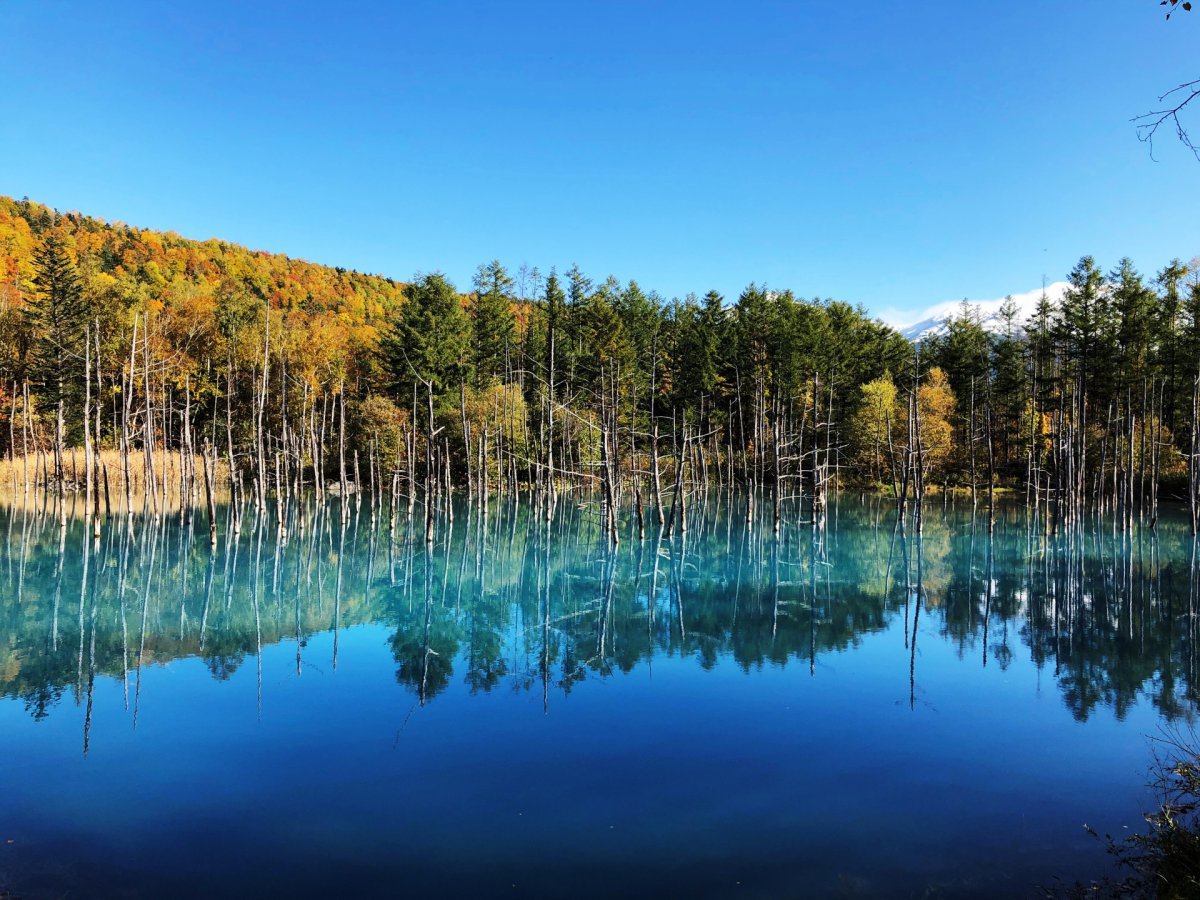
Shirogane Blue Pond (Aoiike), located outside Shirogane town (Hokkaido) is a man-made pond. It is named like that because of its intense blue colour due to natural minerals dissolved in the water. The pond was built to top the volcanic mud of the erupting to prevent damage to the town of Biei in case of an eruption from Mount Tokachidake.
With no tourist intention at the beginning of its creation, the beautiful, artificial scenery only started being promoted as a tourist spot few years ago. Making it today still a fresh, unknown and different destination for the tourism. The lake gets its water from the nearby waterfall, a 45-minute walk from the lake. A walk around the lake will take you about 10 minutes.
Check the season for visiting Shirogane Blue Pond, as it looks different depending of the season. A recommendation? In winter, when covered with snow, this place looks awesome!
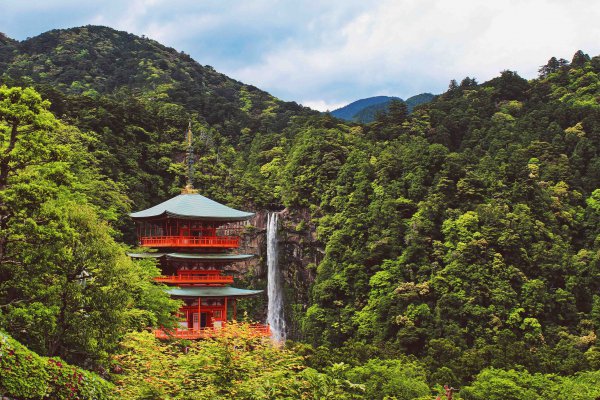
Kumano Nachi Taisha (Wakayama Prefecture) is one of the main destinations of the Kumano Kodo pilgrimage route, together with Kumano Hongu Taisha and Kumano Hayatama Taisha – all UNESCO World Heritage Sites.
The shrine is part of a larger complex that exemplifies the coexistence or fusion of Shintoism and Buddhism, typical to the Kumano region. Right next to the shrine you can find the Buddhist temple Seigantoji. The buildings of both the shrine and the temple are impressive, and among the buildings of Seigantoji there is a three-storied pagoda.
When you want to walk parts of the pilgrimage tour, the Daimon-zaka part is a great option. The route, paved with stone and lined with massive evergreens, leads 600 meters with 267 stairs up to the gates of Nachi Taisha. Near the top of the slope you can catch a glimpse of the great Nachi falls. With 133 meters waterfall, Nachi no Take is one of the tallest waterfalls in Japan. Even today, visitors are impressed by the natural power and beauty of the falls. Looking at the picture above, there is no mistake about how astonishing it is!
Kumano Nachi Taisha
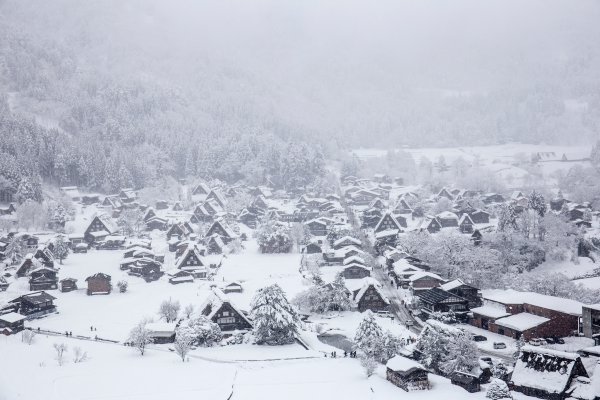
Lined with the Shogawa River Valley in the remote mountains from Gifu to Toyama Prefectures, Gokayama and the neighbouring Shirakawa-go were declared a UNESCO world heritage site in 1995. Both regions are famous for the traditional farmhouses known as gassho-zukuri meaning “constructed like hands in prayer”, because of the similarity of the roofs as Buddhist monks’ hands pressed together praying. The roofs are designed in this way so that the heavy snow during winter time snow doesn’t pile up. The houses are constructed between 100 and 400 years ago and still used this day, you can even spend the night in some of them!
The region is surrounded by mountains as high as 1500m and and during winter time the place is covered with 2 or 3 meters of snow, giving the regions a romantic movie feeling. If what you want is something less developed, less crowded and with less modernity, visit Suganuma and Ainokura. Here you will feel the original essence of the old Japan. It is like travelling back in time to the most romantic setting you can think of!
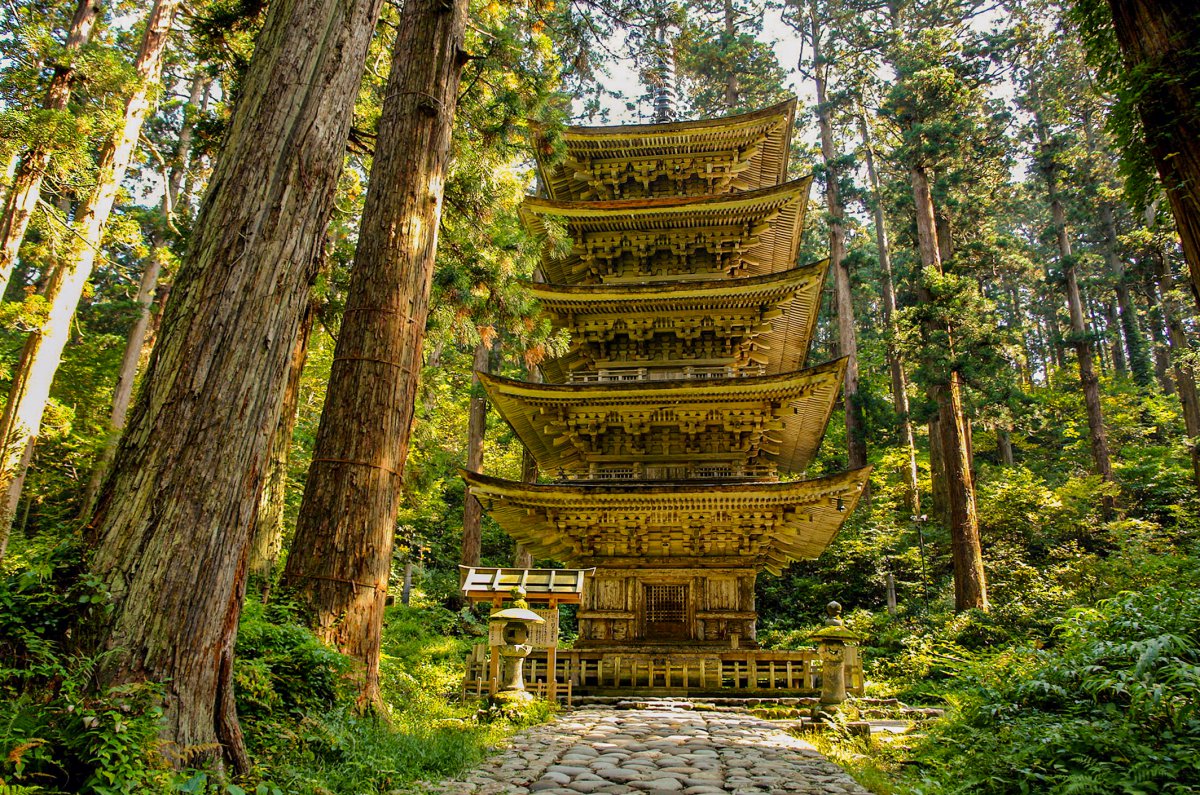
Mount Haguro is the perfect escape from big cities and noise, full of green, and the sound of water around you. Located in Tsuruoka, Yamagata, Haguro-san is the easiest to access amongst the three mountains of Dewa Sanzan. At the top, you can find the Haguro-san Shrine, the only Dewa Sanzan shrine that is open all year round. You can reach the summit by car or bus, however, the traditional – and best to our opinion – way is walking your way to the top.
The mountains of Dewa San come with an important symbolic meaning: Mount Haguro is the representation of the present world’s trouble, Mount Gassan represent the past and Mount Yudono the future. The Three Sacred Mountains of Dewa Sanzan also house two gods: the god of agriculture and the god that protects the Dewa province.
From the torii gate at the base of Mt. Haguro, a walking trail over 2.446 stone steps leads all the way to the summit. Along the way, 33 figures carved into the stone steps bring prosperity to anyone who can find them all. About ten minutes into the walking trail stands a five-story pagoda, as can be seen in the picture, built in 937.
The area is rich in history and religious value and definitely worth a visit to merge with Japanese nature and culture.
This fairytale tunnel is located in Kawachi Fujien, a private garden in Kitakyusyu city. The garden is known for its spectacularly presented large numbers of 20 different species of wisteria flowers (white, blue, purple, violet-blue and pink). Especially the two tunnels formed by 22 wisteria flowers spanned across, are absolutely stunning!The best time to visit is when the flowers are full-bloomed: April – May. But this is, as always, also the most popular time, so we recommend you get your tickets beforehand. The tickets can be bought at the 7/11 (in Japanese only) for ¥500, but you will pay an additional fee depending on the season when entering the gardens. Or you can get your tickets here and reserve your time slot beforehand!
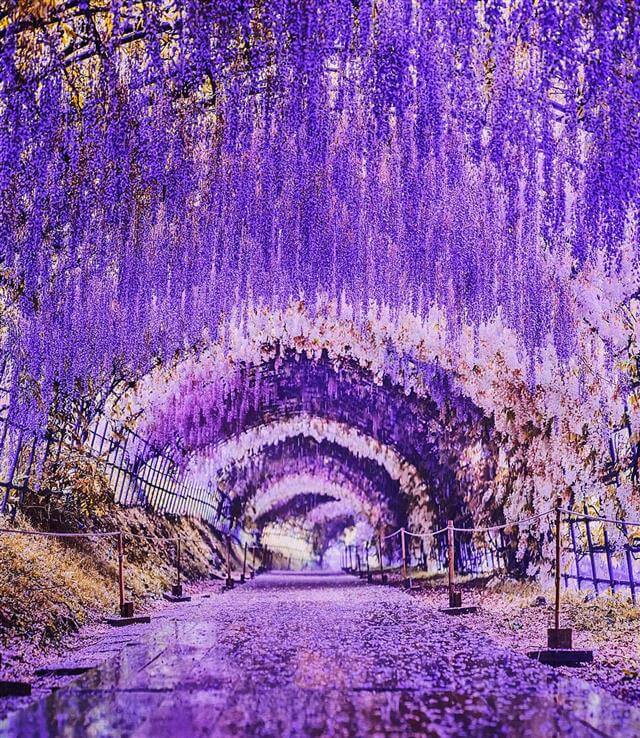
Wisteria Garden
